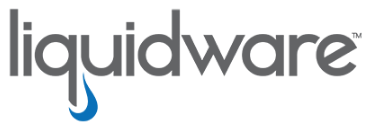Managing desktops is always one of the main struggles facing enterprises. Add in complex application management and the issues increase drastically. Software solutions are often geared towards relieving this pain. Over the last few years, the concept of converting the windows operating system instance into a layer that can be moved around easier has become more prominent. In addition, the concept of redirecting standard application installs into application layers has also gained momentum. These two approaches differ significantly in both implementation and infrastructure requirements. Each have merits but these differences need to be front and center when evaluating the various solutions.
Operating System Layers
A few vendors promoted the idea of creating layers for each of the various components in and around the windows operating system. Typically, this would consist of a core operating system layer for every unique windows version, platform layers would provide hypervisor support across the various vendors, and possibly a layer focused on settings or other customizations. Whereby, once the individual layers are created, they can be stacked on top of each other for a full featured user experience, with reduced management complexity as a secondary focus. This concept looked and sounded great during the marketing presentation but would often fall apart during the POC or production implementation. Don’t get me wrong, operating system layering can work for certain sized customers. However, there is a threshold, where the size, scale and infrastructure footprint suggest that operating system layering may not be the solution of choice. Here are a few examples of the challenges.
On average, desktop image sizes vary across the different Windows versions but historically can be around 40 to 60 GB. Depending upon the vendor solution, enterprises could be asked to take a copy of the existing 40 GB Windows 7 image as a backup and then replace it with the new 60 GB windows 10 image. If you visualize the customer enterprise LAN as a highway, a 40 GGB image going up and a 60 GB image coming down to a single endpoint, across the same highway lane can get messy. That process might be fine for a limited number of users but at scale that can immediately become a logistical nightmare.
Bandwidth limitations are often directly tied to the challenge articulated above. Moving that many large images around your network might be ok for a certain subset of users but at scale it becomes logistically impossible. What happens when the enterprise network guy says….”Wait how much data are you going to be moving around? Because our WAN links are 95% saturated…”
Time constraints are often the silent project decider. “Wait it’s going to take how long to do what you just described? That’s only for X number of users? But we have 3000 users…. are you implying it’s going to take 1 year to complete this project?” Math is hard, but in this case the equation does not really balance when you consider that enterprise networks are capable of moving X amount of data on a normal basis, and this new process would now require moving an additional Y amount of data. In most cases, X + Y = network crash or decreased user experience. Sometimes trying to drive a Buick through the eye of a needle is not the best solution to customer problems.
Customers are often relatively content with their current base image management process, so asking them to completely shift focus to a new and possibly more complex process does not go over well. The introduction of operating system layering to the enterprise environment often interrupts existing processes negatively. The bottom line is that proposed solutions need to actually solve problems as opposed to causing more in the long run.
Application Layers
The goal with application layers has always been to take the path of least resistance. To simply redirect traditional application installs into virtual disks without disrupting the normal windows user experience or desktop management workflows. FlexApp Layering from Liquidware was designed with this principle in mind. The FlexApp virtual disks are transformed into portable containers that can essentially follow the user around from platform to platform. Proprietary filter drivers effectively control communication between the host operating system and the corresponding FlexApped applications. Therefore, the windows operating system thinks the FlexApped applications are natively installed, when in fact they are not. They are simply attached like a puzzle piece during system boot, user login or new Click to Layer, on demand approach. No matter which vendor or platform leveraged by the enterprise, FlexApp Layers can seamlessly integrate with it. For example, if a customer leverages PVS as part of their image management process, FlexApp can simply integrate with the existing workflows. This allows enterprises to separate application management from the overall image management process. This alleviates overall management delays in the long run, especially around platforms like Citrix XenApp.
FlexApp Layers are often just a fraction larger than the corresponding application footprint allocated. As compared to operating system layering, this alleviates or avoids the challenge of moving large windows images across the environment. Obviously, the enterprise would still be leveraging existing image management processes, but can be managed separately from the application management process.
FlexApp Layers require significantly less bandwidth than operating system layers. This is primarily based on the reduced footprint of the FlexApp virtual disk vs the operating system layer. A 20 MB FlexApp layer will obviously require less bandwidth than a 40 GB operating system layer moving across the network.
FlexApp Layers can be created in minutes as opposed to the hours required for operating system layers. Therefore, management and deployment tasks can be accomplished under normal project constraints which leads to better success rates and increased overall user experience.
Summary
Managing windows desktops is hard enough without making it more complicated through the use of operating system layers. Enterprises can manage windows desktop images through existing, efficient workflows, and implement optimized application strategies in parallel. FlexApp Layering from Liquidware has evolved into an integral solution within any enterprise application strategy.
Download a Trial version of FlexApp










[…] Read the entire article here, Application Layering VS Operating System layering | Liquidware Blog […]